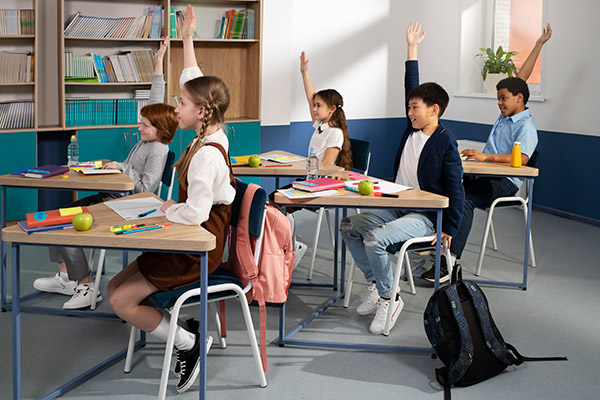
23 MAY 2025, VITORIA-GASTEIZ | Faculty of Arts, UPV/EHU
22nd International LASLAB Symposium
CLIL IN PRACTICE: SUCCESSFUL IMPLEMENTATION IN THE CLASSROOM
Content and Language Integrated Learning (CLIL) is an educational approach in which subjects are taught in an additional language, integrating both content and language learning. It has been more than thirty years since the term was coined in Europe, and since then this methodology has gained popularity worldwide, influencing language policies and pedagogical practices. In this practice-oriented symposium, some of the most remarkable CLIL experts from around the world will present hands-on applications of the theoretical frameworks, as well as recommendations for successfully developing CLIL in the classroom.
The symposium is aimed at teachers, university students and researchers, and all those interested in foreign language acquisition and multilingualism. The symposium will be held entirely in English.
This event is part of the project: Multilingualism and integrated language learning: Strategic and methodological tools in school contexts (MULTICLIL) PID2021-122689NB-I00 by MCIN/AEI/ 10.13039/501100011033 and “ERDF A way of making Europe”. Principal Investigator: Yolanda Ruiz de Zarobe.
Programme
(Friday, May 23, 2025)
8:30-8:50 – Registration
8:50-9:00 – Opening
9:00-10:00 – Teresa Ting (University of Calabria)
Updating the CLIL Acronym: Shifting the “L=Language” to “L=Literacy”
10:00-11:00 – Darío Banegas (University of Edinburgh)
The Language Quadriptych: The story of a tool
11:00-11:30 – Coffee Break
11:30-12:30 – Diane J. Tedick (University of Minnesota)
Scaffolding Language Development in CLIL Classrooms
12:30-13:30 – Ana Llinares (Universidad Autónoma de Madrid)
Teacher-Researcher collaboration in CLIL: a needed dialogue between research and practice
13:30-14:30 – Do Coyle (University of Edinburgh)
CLIL in Practice: What we know works in the classroom
14:30-14:35 – Concluding remarks
Plenary Speakers
TERESA TING
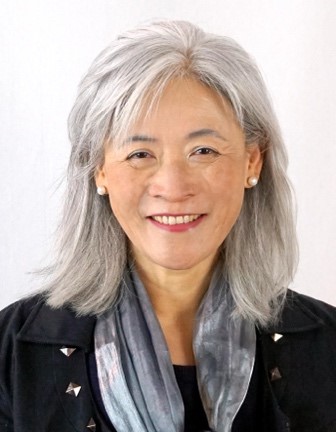
BIO
Y.-L. Teresa Ting is a tenured full-time Researcher at the Department of Chemistry & Chemical Technologies at the University of Calabria, Italy. She obtained her PhD in Neurobiology (Kent State, USA), studying learning and memory processes in rat-brain models, in vivo and in vitro, and taught Functional Human Neuroanatomy to medical students. After moving to Italy, she started teaching English to Italian students, for which she obtained an MA-ED in TEFL (East Anglia, UK). She researches how to apply cognitive neuroscience understandings regarding how the brain learns (or not) towards the design of STEM-instruction materials, using some in classroom research (ELTJ, IJBEB, etc.). A set of her upper-secondary CLIL-science materials received the 2013 ELTons Award for ‘Innovative Writing’; in 2022, another set of STEM-materials for lower-secondary placed alongside BBC and National Geographic; she has written learning-materials for CUP. Teresa is also involved with teacher professional development for CLIL, EFL and Subject-instruction in Europe.
Updating the CLIL Acronym: Shifting the “L=Language” to “L=Literacy”
As illustrated in Figure 1, despite the fact that foreign language (FL-) and Content-instruction are characterized by such different textbooks, classroom dynamics and teaching traditions, a shared concern is students’ ability to use language well when speaking or writing about complex content-relevant notions, in age-appropriate ways, as expected by their chosen professional community: i.e., productive academic/discipline-specific literacy . Indeed, be it the world of electricians or electrical engineers, professionals are expected to produce discourse which reflects community-accepted ways of ““languaging” about community knowledge”. However, if “academic content and language” at post-primary level are already complex and challenging in L1, mainstreaming CLIL into post-primary education must ensure the achievement of all school-leavers, including those who lack resources for extracurricular FL tuition and/or those not raised by academically minded caregivers. In this workshop, participants will enter the shoes of 10-, 12-, and 17-year-olds and, using CLIL-materials and M&Ms (no eating required), will personally experience how the use of a FL can, not only facilitate the comprehension of otherwise complex chemistry concepts, but also the seamless assimilation of complex discipline-specific discourses that learners need to correctly “language about” these chemistry-specific concepts, in age-appropriate ways. Classroom results obtained from the use of these literacy-building materials will be presented briefly, alongside step-by-step analyses of how the learning processes seamlessly integrated content comprehension into language use, and thus the mastery of discipline-specific literacy/ies . Through this workshop, participants will come to appreciate that, by expanding the “L=Language” in the CLIL acronym to “L=Literacy/ies”, it becomes easier to “integrate content with language”, and thus “design learning” with all CLIL-learners in mind.

DARÍO BANEGAS

BIO
Darío Luis Banegas is Senior Lecturer in Language Education at Moray House School of Education and Sport (University of Edinburgh) where is Director of the PhD Education programme and leads a course on second language teaching curriculum. He is an active member of teacher associations in Latin America and the UK, and is the co-lead of the Language Curriculum Special Interest Group with the British Association of Applied Linguistics. His main teaching and research interests are: CLIL, language curriculum design, pre-service language teacher education, and action research. In 2023 he co-edited the Routledge Handbook of Content and Language Integrated Learning.
The Language Quadriptych: The story of a tool
In this presentation I will introduce the Language Quadriptych, a practice-driven, pedagogical tool aimed at providing systematic support on language learning for teachers, which then can translate into support for students. The tool is based on a collaborative action research project carried out with secondary school teachers and students at a bilingual (Spanish-English) school in Argentina. If bilingual education is understood as educational policy and a form of education, then the Language Quadriptych has the potential to become a planning tool which can enable teachers to design and implementing learning opportunities which will raise students’ disciplinary literacies and language awareness in formal education. The tool can also support students’ development of critical thinking and metacognitive reflection in an additional language. In this talk, I will underscore the power of action research as a enabling practice towards sustainability and situated pedagogies.
DIANE J. TEDICK
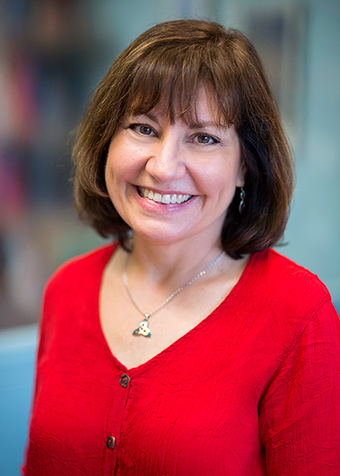
BIO
A former bilingual teacher, Diane (Dee) Tedick is Professor Emeritus of Second Language Education at the University of Minnesota, where she worked as a teacher educator and researcher in the fields of immersion and content-based language education for over 30 years. The main focus of her research was teacher development for content-based language education contexts. Her publications have appeared in journals such as Applied Linguistics, The Modern Language Journal, International Journal of Bilingual Education and Bilingualism, and the Journal of Immersion and Content-Based Language Education. She has co-edited two books on immersion, both published by Multilingual Matters: Pathways to Multilingualism: Evolving Perspectives on Immersion Education (2008) and Immersion Education: Practices, Policies, Possibilities (2011). She co-authored (with Roy Lyster) a book for immersion and dual language teachers titled Scaffolding Language Development in Immersion and Dual Language Classrooms (Routledge, 2020). She is also co-editor of a 2024 Multilingual Matters volume titled Teacher Development for Content-Based Language Education: International Perspectives.
Scaffolding Language Development in CLIL Classrooms
The fundamental premise underlying CLIL instruction is the expectation that students can learn and teachers can teach both meaningful content – including academic subject-matter content – and a new language (L2) at the same time. The crux of effective CLIL teaching is language and content integration – teachers and students have to attend to both content and language if the L2 learning benefits of these school-based programs are to be maximized. Yet content and language integration is a pedagogical challenge for teachers, because there is an inherent dilemma underlying CLIL and other content-based language education programs. Namely, improving students’ proficiency requires students’ extended use of the L2, whereas extended use of the L2 requires higher levels of proficiency. In other words, how can students fully participate in CLIL classrooms in a language that they are still learning and know only partially? The answer lies in the scaffolding that teachers provide to enhance classroom instruction.
This presentation will begin with a definition of scaffolding and a brief introduction to various types of scaffolds available to CLIL teachers. In actual classroom discourse there is a dynamic relationship between strategies for scaffolding for student comprehension (assisting students in understanding content presented through the L2) and those for scaffolding student production (supporting students in productively using the L2 to engage with the content). The majority of the presentation will home in on strategies for effectively scaffolding for student production in the context of meaningful content instruction.
ANA LLINARES
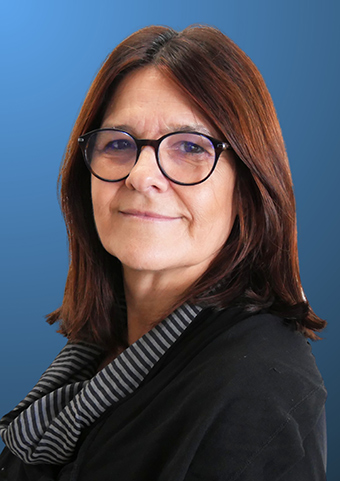
BIO
Ana Llinares is full professor in the English department at the Universidad Autónoma de Madrid, Spain. She teaches second language acquisition and content and language integrated learning (CLIL), both at undergraduate and postgraduate levels. She coordinates the UAM-CLIL research group (http://www.uam-clil.org) and has published widely on CLIL at primary and secondary school levels, mainly applying systemic functional linguistic models. She is now vice chair of the European COST project “CLIL Network for Languages in Education: Towards bi- and multilingual disciplinary literacies” and co-editor of the Journal of Immersion and Content-Based Language Education.
Teacher-Researcher collaboration in CLIL: a needed dialogue between research and practice
Recent studies have called for the need for dialogue between researchers and practitioners and the important role of the active involvement by practitioners in research studies in second language acquisition (e.g. Sato and Loewen, 2019). Drawing on recent work carried out by the UAM-CLIL research group (http://www.uam-clil.org), I will showcase the importance of developing this dialogue in CLIL contexts, involving content teachers, language teachers and researchers (Llinares, Morton & Whittaker, 2024). I will illustrate the application of research models such as Systemic Functional Linguistics, Legitimation Code Theory and Cognitive Discourse Functions to help CLIL teachers develop a joint understanding of disciplinary literacies. In a series of seminars, the teachers moved from awareness and some sort of shared understanding of the role of language in CLIL disciplinary literacies, to a multidisciplinary assessment of students’ production each teacher drawing on their own discipline (language and content), to interdisciplinary reflection (trying to integrate understandings of content and language in seminar discussions) and, finally, to collaborative design of transdisciplinary tasks, which were implemented in their classes, followed by the students’ assessment of their own production using both language and content criteria.
DO COYLE

BIO
Do is Chair in Language(s) Education and Classroom Pedagogies at the University of Edinburgh. She has worked tirelessly over several decades in the field of plurilingual education with governments and professional agencies but especially with CLIL teachers and learners across the world to promote pedagogical innovation that is inclusive, accessible and equitable. Earlier work led to many iterations of the 4Cs Framework, and the Language Triptych, used by teachers globally. Do’s ongoing and more recent work with Oliver Meyer and the Graz Group has developed a Pluriliteracies approach to Teaching for Deeper Learning (PTDL) that explores holistic ways of developing critical pluriliteracies skills across languages and cultures for all learners everywhere and anywhere.
CLIL in Practice: What we know works in the classroom
In this session, I shall discuss what teachers say has contributed to the successful transformation of legacy pedagogies in CLIL classrooms through challenging the notion of quality learning for all young people. Across a range of multilingual settings, recent work explores ways of experimenting three types of fluencies in multilingual classrooms foregrounding (pluri)literacies approaches led by both language and subject teachers alike. When such approaches are underpinned by sustained practices that promote deeper learning then normalising dialogic practices, designing tasks that mentor learning and make the invisible visible, pathways emerge for learners anywhere to experience self-value, resilience and a sense of purpose.
Who Helps Us




About Us
The Language and Speech Laboratory is a multidisciplinary research group based in the University of the Basque Country which investigates issues concerning speech and language acquisition.
Staff
María del Pilar García Mayo (IP)
Amaia Aguirregoitia
Agurtzane Azkarai Garai
Irene Balza Tardaguila
María Tania Barberán Recalde
María Basterrechea Lozano
Asier Calzada
Martin Cooke
Aintzane Doiz Bienzobas
María Luisa García Lecumberri
Esther Gómez Lacabex
Junkal Gutierrez Mangado
Marta Kopinska
David Lasagabaster
Almudena Mallo Dorado
María Martínez Adrián
Ruth Milla Melero
María Orcasitas Vicandi
Yolanda Ruiz de Zarobe
Ph. D. students
Irene Alonso Arruabarrena
Sara Chamosa Rabadán
Paloma Delgado Garza
Kevin Iglesias Diéguez
Zuzana Nadova
María Nieva Marroquín
Research assistants
Marina Galdeano
María Sierro
Travel and Venue
The conference will take place in:
Faculty of Arts, UPV/EHU.
Edificio Micaela Portilla eraikina
Justo Vélez de Elorriaga Kalea, 1, Campus de Álava
01006 Vitoria-Gasteiz (Spain)
laslab.ehu@gmail.com
+34 945 01 40 28
www.laslab.org
HOW TO GET TO VITORIA-GASTEIZ
BY PLANE
Vitoria International Airport (VIT) is very close to the city (less than 10 km), and it has flight connections with national and international cities, including Sevilla, Málaga, Alicante, Mallorca and Gran Canaria in Spain, as well as with Brussels/Charleroi (Belgium), Cologne-Bonn (Germany) and Milan-Bergamo (Italy). The main company operating from Vitoria is Ryanair.
Vitoria Airport is conveniently connected with the city centre by bus. Bus tickets can be purchased here.
Alternatively, Bilbao Airport (BIO) is about 1 hour away by public transport and it has many international connections. To reach Vitoria-Gasteiz from Bilbao airport, catch the bus from the one and only bus stop just outside the arrivals area. Remain on the bus until the final stop at Bilbao bus terminal (Intermodal). Buses run every 15-20 minutes and the journey takes about 20-25 minutes. At Bilbao bus terminal, take the bus to Vitoria-Gasteiz run by La Union bus line. The journey takes 45 min.
BY TRAIN
Vitoria-Gasteiz has direct train connections from Madrid (3h 10min) and Barcelona (5h).
BY BUS
Check the bus company ALSA for connections between Vitoria-Gasteiz and the main cities within Spain. This company offers journeys directly from the Madrid Airport (Barajas) to Vitoria (4h 30 min).
ABOUT VITORIA-GASTEIZ
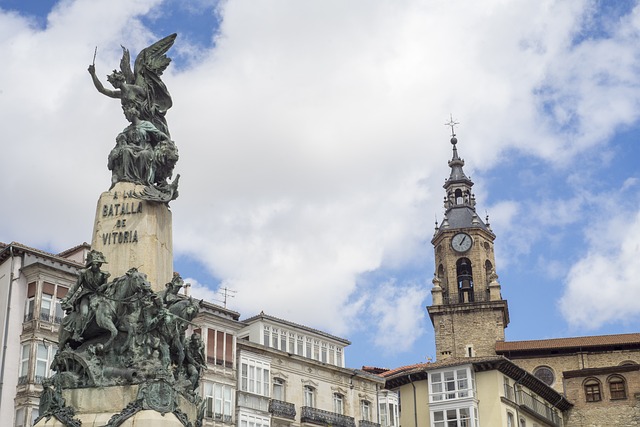
Vitoria-Gasteiz is the capital of the province of Alava, in the Basque Country. In 2012, it was designated “European Green Capital” by the European Commission, thanks to its pioneering environmental policies. The city is surrounded by parks known as the “green belt”.
The city has a medieval centre, where countless places of great traditional character, such as the Plaza de la Virgen Blanca (White Virgin Square), and historic buildings like the cathedral of Santa María.
Vitoria-Gasteiz is also known for its lively culinary scene, with a range of restaurants, cafes, and food markets offering some of the best Basque dishes and pintxos.
The centre is relatively small and easy to get around on foot. The UPV/EHU campus is connected with the bus station by tram and bus, and the train station is right opposite the Faculty of Arts (2 min walk).
ACCOMODATION
Some of the accomodation options available in Vitoria-Gasteiz all of which are within short walking distance (12 minutes max.) of the conference venue.
Hotel Silken Ciudad de Vitoria (4*)
Walking distance to the conference venue: 12 minutes approx.
Standard room price per night: 80 € approx.
ABBA Jazz Hotel Vitoria (3*)
Walking distance to the conference venue: 8 minutes approx.
Standard room price per night: 60 € approx.
Hotel Dato (2*)
Walking distance to the conference venue: 5 minutes approx.
Standard room price per night: 65 € approx.
Hotel Arts (2*)
Walking distance to the conference venue: 12 minutes approx.
Standard room price per night: 55 € approx.
NH Canciller Ayala (4*)
Walking distance to the conference venue: 10 minutes approx.
Standard room price per night: 75 € approx.
Kora Green City (4* Aparthotel)
Walking distance to the conference venue: 8 minutes approx.
Standard room price per night: 65 € approx.
Hotel Nirea (2*)
Walking distance to the conference venue: 8 minutes approx.
Standard room price per night: 70 € approx.
Hotel Centro de Vitoria (2*)
Walking distance to the conference venue: 8 minutes approx.
Standard room price per night: 50 € approx.
FOOD, COFFEE & MORE
CLOSE TO THE FACULTY OF ARTS (OUR CONFERENCE LOCATION):
The New Classic
Affordable and traditional daily menu. It also offers pintxos, tapas and sandwiches.
Ta-than beers and burgers
Amazing burgers for a convenient price.
IN THE CITY CENTRE:
Nalu Poké Vitoria
Good choice for a healthy meal. Choose your ingredients and create your own salad.
